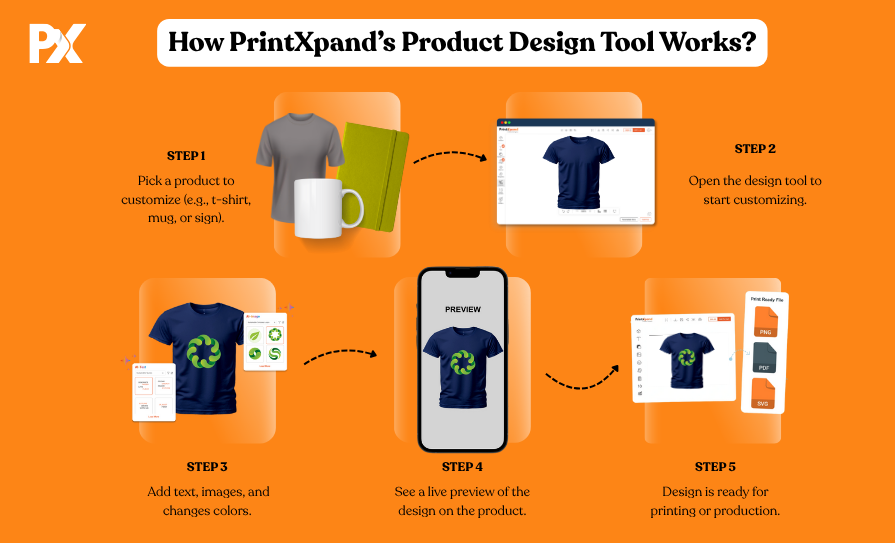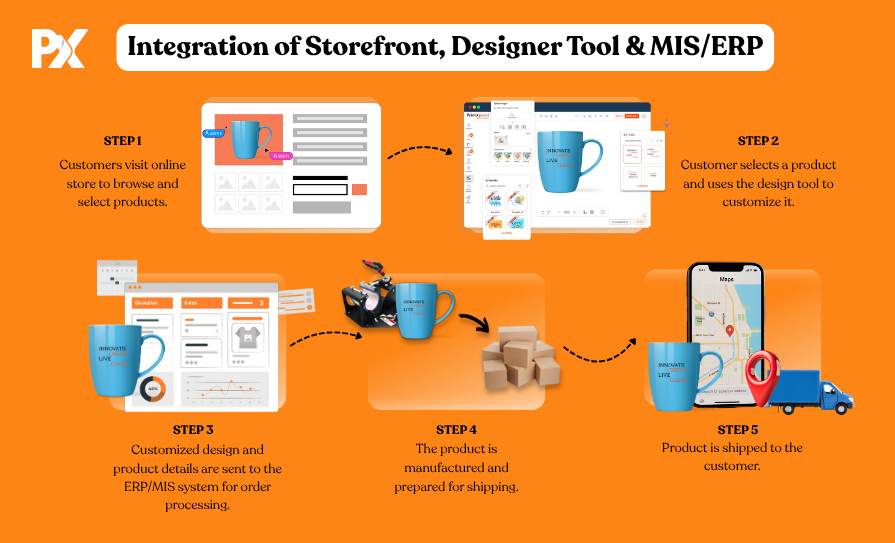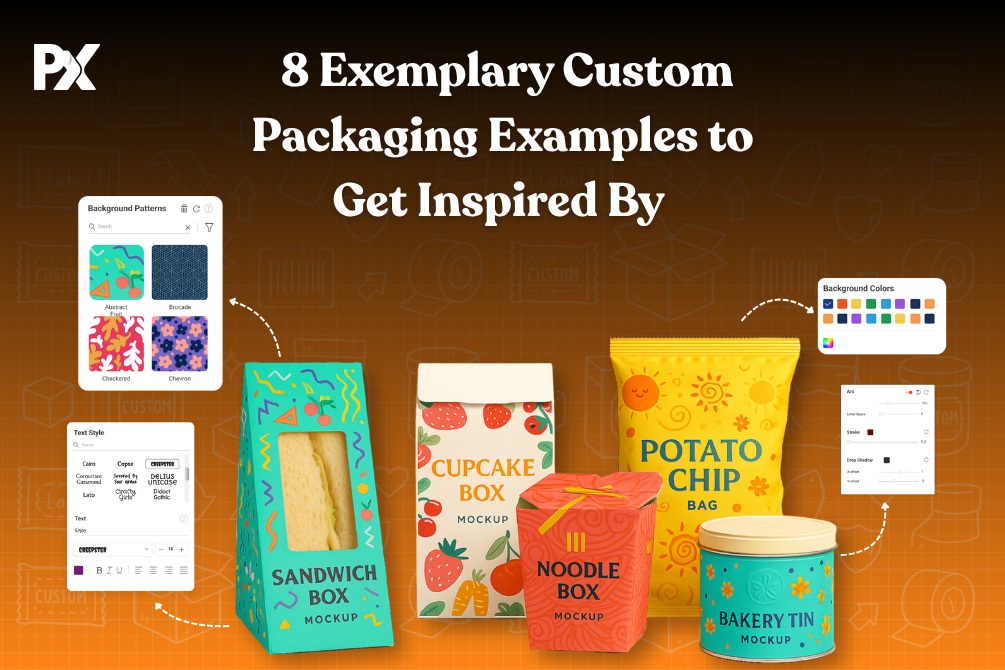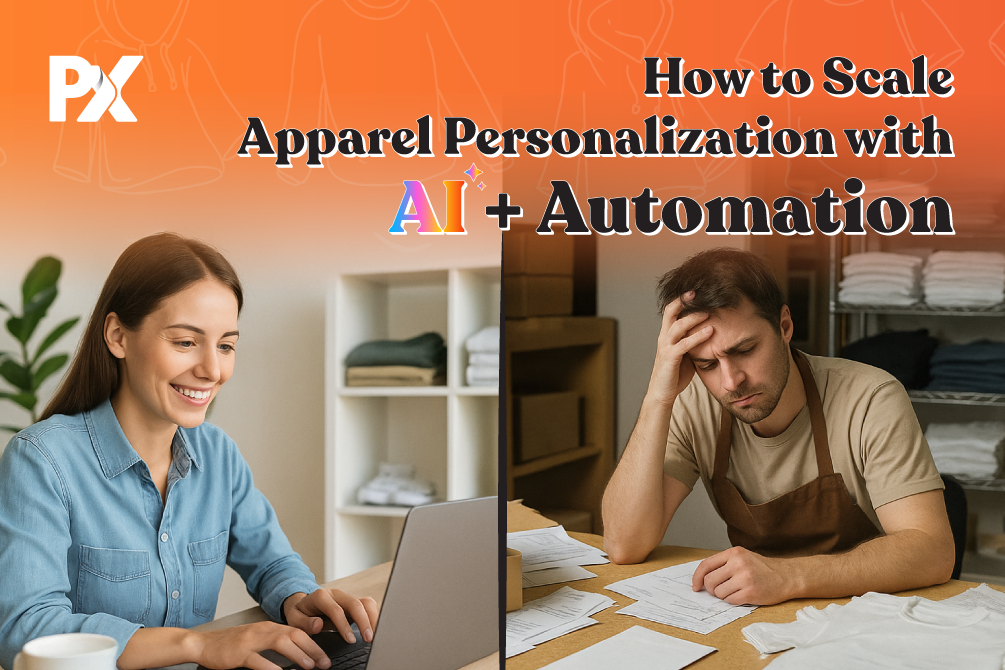Summary
Mike Thompson thought he had this whole custom printing thing figured out. His print shop in Denver had decent traffic, good products, and competitive prices. So why were only 12% of visitors actually completing purchases, even after an average of 8 minutes of browsing through the brand’s custom t-shirts and mugs? For a fact, he knows that customers want the intuitive design experience they get from consumer platforms, but with professional results that actually look good when printed.
Mike’s tried 3 different design plugins over the past year. The first one looked promising in demos but crashed whenever customers uploaded high-resolution images. The second offered beautiful templates but locked him into a monthly subscription that escalated with usage, and the templates looked nothing like his brand aesthetic. The third seemed perfect until he realized customers were submitting designs with 72 DPI resolution and RGB color spaces that looked terrible on apparel.
In one of the interactions, Mike said this: “I’m losing customers who want to customize products, and I’m losing money on the ones who do manage to place orders because we have to fix their files.” Further adding to the call, he hopefully expressed, “There has to be a way to give customers that smooth, modern design experience without sacrificing print quality or losing control over our processes.”
As web-to-print solution experts, we understand Mike’s frustration. On a larger scale, his frustration reflects a widespread challenge across the print industry. Most design tools either deliver poor user experiences or create production headaches. But PrintXpand’s web to print product designer addresses both sides of this problem through a fully integrated solution tailored for real-world product customization for print shops.
What Print Customers Actually Want When They Say "Canva-Like"
Customers don’t really want Canva when they mention it—they want that smooth, instant experience Canva provides. Click something, and see it change immediately. Add text, and watch it appear right away. They want confidence that their screen preview actually matches the final product.
But there’s a big difference between designing a social media post and a print file. Social posts can be pixelated or slightly off-color without anyone noticing. Print products? Not so much.
This fundamental difference explains why so many generic design plugins fail when applied to interactive product designer tool applications for print shops, where precision and production compatibility aren’t optional—they’re essential business requirements.
From the customer’s perspective, the ideal real-time product personalization appears effortless while managing difficult requirements transparently. Customers want to see their actual designs on actual products. Their logo on a polo shirt. Their photo on canvas. Text wrapping around a mug. The system shows them exactly what they’ll get while automatically handling resolution, color space, and print specifications.
| Expert Tip: | |
|---|---|
| For a smooth and customizable product experience, you need to strike a balance between creative freedom and backend constraints. Configure automatic DPI validation, color conversion, and bleed zone management so customers never see the technical complexity, but your production team never receives unusable files. | |
Can customers view real-time previews that account for different printing methods, such as embroidery versus screen printing?
This question highlights a critical requirement: The interactive product designer tool must understand that the same design will look different depending on the production method, and customers need to see accurate representations of the final product.
How PrintXpand's Product Designer Lets You Own the Experience

PrintXpand’s web to print product designer approaches this challenge by treating print specifications as foundational requirements rather than afterthoughts. Instead of hoping customers will submit usable files, this print-ready file generation tool ensures every design meets production standards from the moment it’s created.
The modular UI for product customization allows complete customization of the design experience based on product complexity and customer sophistication. For simple products like personalized mugs, customers see a streamlined interface focused on text and image placement. For complex signage projects, the same underlying system can expose advanced features like multi-layer management, precise alignment tools, and professional typography controls through its product designer with layered artwork support.
This flexibility extends to brand consistency requirements. Mike can create design templates that lock certain zones—ensuring logos always appear in approved locations—while giving customers freedom to customize other elements through the design editor with locked zones and font control. Corporate clients can work within pre-approved brand guidelines without feeling confined, whilst casual consumers receive coaching to help them achieve professional-looking results.
The technical architecture supports this flexibility through the API-first product personalization platform that interacts seamlessly with existing workflows. Whether Mike is using Shopify for his consumer storefront or a custom-built B2B portal, the designer maintains consistent functionality while adapting to each platform’s unique requirements through seamless print shop design tool integration.
| Expert Tip: | |
|---|---|
| Configure modular UI for product customization to simplify the editor for first-time users while offering advanced features for B2B clients. This approach eliminates the need for separate codebases while ensuring every customer segment gets an experience tailored to their expertise level. | |
Can I define template libraries by customer tier or store?
The system supports sophisticated template management that can restrict or expand available options based on customer segments, subscription levels, or storefront requirements.
How do I handle pre-approved brand elements for B2B clients?
Corporate accounts can access locked asset libraries with pre-approved logos, colors, and fonts while maintaining design flexibility within brand guidelines.
Real-Time Preview + Print-Ready Outputs = Reduced Back-and-Forth
The gap between screen preview and physical product is where most customization tools fail catastrophically. Customers design something that looks perfect on their monitor, only to receive a product that doesn’t match their expectations, leading to returns, reprints, and damaged relationships.
PrintXpand’s rendering engine addresses this by generating previews that account for substrate properties, printing methods, and finishing effects. When their business needs realistic foil previews for business cards, the system can be configured to show metallic effects. For an embroidered logo, the platform can be tailored to display thread density and dimensional effects rather than flat representations.
This accuracy comes from deep integration with production workflows. The system doesn’t just preview designs—it generates them using the same color profiles, resolution settings, and technical specifications that will be used in production. What customers see is what they get, because the preview is the production file created by the print-ready file generation tool.
| Expert Tip: | |
|---|---|
| Configure DPI alerts and file-type outputs by product category. Photo printing requires different technical specifications than vinyl signage, and your preview system should reflect these differences automatically rather than forcing customers to understand print technicalities. | |
Does the system support dielines and cut-path previews for die-cut products?
Yes, the system handles complex dielines and cut paths, showing customers exactly how their design will align with finishing processes.
Can we customize the print-ready file structure per vendor?
The output system supports multiple file format configurations, allowing different specifications for different production partners or equipment types.
Integration with Storefronts, Order Systems, and Production Floor

The most sophisticated design tool becomes worthless if it creates bottlenecks in order processing or production planning. PrintXpand’s approach treats the designer as one component of a comprehensive workflow rather than a standalone solution.
This is where PrintXpand’s web to print MIS/ERP software solution becomes the operational backbone that transforms design-to-delivery workflows. Instead of orders sitting in digital limbo after customers complete their designs, the ERP orchestrates every step from initial order capture through final fulfillment. Orders flow directly from the design interface into production management systems, carrying complete technical specifications, file requirements, and customer preferences. Job tickets are generated automatically with all necessary production details. Quality control checkpoints are triggered based on product complexity and order value.
The ERP’s workflow engine handles the complexity that typically requires manual intervention. Say a corporate client orders branded apparel that needs brand approval first. The system knows this and sends it to the right people automatically. During the busy season, when a rush order comes in? The system checks what equipment is available and when jobs are due, then fits it into the schedule. If something goes wrong in production, the right team members get alerts while customers get updates without anyone having to manually send emails.
This integration extends to existing technology stacks with robust Shopify integration with product designer capabilities alongside WooCommerce, Magento, and custom platforms. Whether Mike’s team uses third-party RIP software, MIS systems, or specialized production equipment, the ERP maintains compatibility through robust API connections and standard file format outputs, ensuring that custom designs translate seamlessly into production-ready jobs through print shop design tool integration.
| Expert Tip: | |
|---|---|
| Tight synchronization between designer and ERP systems reduces human error, accelerates turnaround times, and enables scalable growth across multiple storefronts. Configure this integration carefully during initial setup to avoid manual intervention later. | |
Can I trigger auto-approval for repeat designs?
The API-first product personalization platform supports sophisticated approval rules that account for customer history, design complexity, order value, and risk factors.
How does PrintXpand pass job specs to third-party RIP software?
Standard industry formats and API connections ensure compatibility with existing production workflows and equipment.
Customization Possibilities: From Mugs to Bulk Corporate Orders
The versatility of PrintXpand’s designer tool becomes apparent when examining different use cases across Mike’s expanding business. His consumer storefront handles straightforward personalization—names on mugs, photos on canvas, and simple text on apparel. The interface for these products emphasizes simplicity and speed.
His B2B portal serves corporate clients with more sophisticated needs. Marketing departments upload brand assets, sales teams configure bulk orders, and approval workflows ensure compliance with brand guidelines. The customizable product experience adapts to support complex corporate requirements without additional development work.
The most advanced application involves variable data printing customization software for direct mail campaigns and personalized packaging. Clients upload spreadsheets with customer data, select design templates, and generate thousands of unique pieces automatically.
Each use case shares the same underlying white-label product designer software while presenting completely different user experiences. Consumer customers never see corporate approval features, while B2B clients don’t encounter simplified interfaces designed for casual users.
| Expert Tip: | |
|---|---|
| For promotional products and corporate orders, configure role-based design approval where marketing teams upload brand assets, sales trigger fulfillment, and operations manage production scheduling. | |
Can I use the designer for variable data print jobs?
The variable data printing customization software processes these projects efficiently, generating previews for verification and managing file organization for production.
What does it take to build a branded reseller portal with design tools built in?
The white-label product designer software architecture supports complete customization of branding, workflows, and feature sets for reseller partnerships.
What Print Business Owners Say After Deploying It
The transformation Mike experienced reflects outcomes across PrintXpand implementations. Customer satisfaction improved dramatically once preview accuracy eliminated the gap between expectations and reality. Return rates dropped by 78% because customers could see exactly what they were ordering. Order values increased by 34% because customers felt confident experimenting with premium options.
Lisa’s operational workload shifted from firefighting to optimization. Instead of fixing problematic designs, she focuses on improving templates, refining workflows, and identifying new product opportunities. “We used to spend 40% of our time correcting customer files,” she reports. “Now we spend that time on strategic improvements that grow the business.”
The scalability impact proved most significant. Mike’s single-location operation expanded to serve clients across multiple states because the designer eliminated geographic constraints on customization services. Corporate clients could manage national campaigns through standardized workflows while maintaining local customization capabilities through real-time product personalization.
From an IT perspective, David Martinez, Mike’s technical consultant, emphasizes the architectural advantages. “We’re not locked into someone else’s roadmap or pricing model,” he explains. “When we need new features or integrations, we can develop them ourselves or work with PrintXpand’s team. That flexibility is impossible with SaaS tools.”
| Expert Tip: | |
|---|---|
| Most people don’t think about it until it’s too late! When you own the system instead of renting it, you keep everything—your templates, customer files, and all your settings. This matters way more as you grow and need custom features that SaaS platforms won’t build for you. | |
Can we host this on our infrastructure and maintain complete control over the data?
PrintXpand’s non-SaaS architecture gives businesses complete control over their installation, data, and customization.
How flexible is the licensing if I want to roll it out across five brands?
The licensing model supports multi-brand deployments with centralized management and brand-specific customization.
Build It Your Way—With No Compromises
Moving from basic customization to real product customization for print shops isn’t an overnight switch. You need to figure out what’s broken now and what you’re actually trying to accomplish.
Look, there’s a massive difference between basic personalization and serious customization capabilities. Print shops that get product customization for print shops right don’t just make customers happier—they build businesses that are hard to copy and can charge what they’re worth.
Here’s what you’re dealing with: customers want that smooth experience they get everywhere else. Your production team needs tools that actually fit how they work. IT wants control and predictable costs. PrintXpand’s design editor with locked zones and font control handles all of this.
You’ve read this far, so you’re probably serious about this. Want to see how it actually works with your products? We can walk you through a live demo built around your business and show you the Shopify integration with product designer capabilities or with any other platform that you want!
All product and company names are trademarks™, registered® or copyright© trademarks of their respective holders. Use of them does not imply any affiliation with or endorsement by them.



